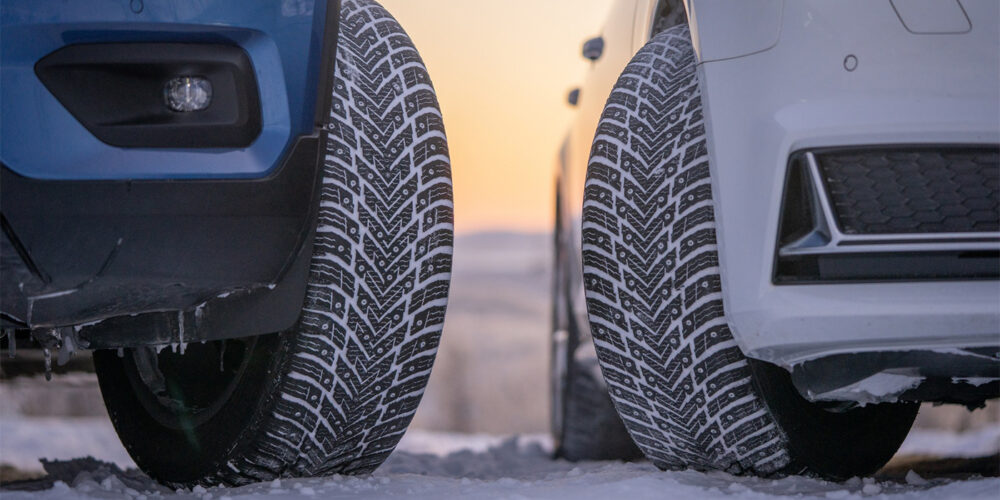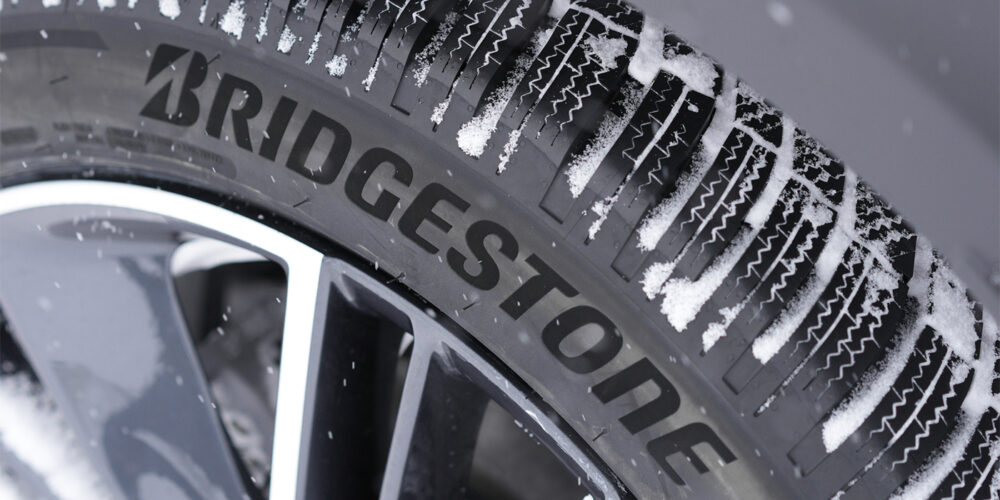Imagine for a moment that you’re behind the wheel of your car, driving on the highway. Your family is with you. In the passenger’s seat is your husband or wife, mother, or father, and in the back, your young son or daughter, niece or nephew. It’s a beautiful, sunny, crisp November Saturday morning and the temperature gauge on your dash says the outside ambient temperature is 38 degrees. You glance in your rearview mirror and see that beautiful little smile on your daughter’s face – and that’s when it happens.
It starts with a panicked sensation that begins in the pit of your stomach. That putrid, empty feeling. That’s your brain sending a signal to flood your bloodstream with stress chemicals called cortisol and adrenaline. Subconsciously, your pupils dilate and your mind becomes instantly laser-focused. Your palms sweat a little as you grip the wheel and pull your car out of a hydroplane at 75 mph. You’ve met black ice, a deadly road hazard that comes with the territory of living in a geographic area of the country where temperatures periodically (or regularly) dip below freezing. Are your all-season tires going to get the job done?
The question is simple, but profound in the kind of way that moves people to take action: What are you willing to do to avoid this scenario entirely? Look, you have places to be and people who love you. People depend on you. What is your peace of mind worth to you? When it comes to selling winter tires, this isn’t simply an important question to ask; it’s the only question worth asking. This question is the difference between mediocrity and remarkability. Where average tire retailers stand behind the counter and talk product features like 3D siping, next-gen tire compounding and benefits like shorter stopping distances, remarkable retailers focus instead on the peace of mind that comes with knowing you can get from point A to B to C safely with your loved ones in tow.
Which is to say that mediocre tire professionals focus on what they are selling: a tire, a product feature, a benefit. Whereas remarkable tire professionals – the kind of people who move our industry forward – focus instead on why the product they’re selling is worth the investment. When it comes to selling winter tires, what are you actually selling?
A Practical Choice
I grew up in the rubber capital of the world in the shadow of the sole remaining American-owned tire manufacturer in Akron, Ohio. My first real job was doing winter tire changeovers for tire consumers, including the engineering employees at that Akron-based tire company. I remember we called them snow tires back then, which made obvious sense because those are the tires we installed on customer vehicles when the snow started flying, typically a little before Thanksgiving. But a lot has changed since those days. Vehicles have become infinitely more complex. Cars, SUVs and CUVs have generally gotten dramatically smarter and more capable. As a result, the tires those vehicles require have gotten better – much better. Today, we call them winter tires because tire lines like Bridgestone’s Blizzak, Continental’s VikingContact and Nokian Tyres’ Hakkapeliitta come alive when temperatures dip below the 45-degree mark on the thermometer.
Headquartered in Nokia, Finland about a two-hour drive North from the capital of Helsinki is Nokian Tyres. It began building tires for passenger vehicles in 1932 and introduced its Hakkapeliitta tire line to the world four years later.
In fact, according to Senior Communications Manager Wes Boling, Nokian invented the winter tire.
“We were first, and we strive to be the best. That tradition of winter innovation has given us the highest driver loyalty in the North American tire industry,” Boling says. And for Boling, there are more pragmatic reasons for consumers to choose a set of winter tires this season.
“A crash is significantly more expensive than investing in tires designed to prevent accidents. And roads are never more dangerous than in the winter,” says Boling. “How much are you willing to spend on a crash? How willing are you to jeopardize your family’s safety?”
Both are valid questions for your customers to ponder when deciding on their next set of tires, and Boling is not wrong. According to the U.S. Department of Transportation, there are just shy of 6 million vehicle crashes each year and about 21% of those involve hazardous weather, claiming the lives of nearly 6,000 Americans per year in the process. But let’s give this data some context. For a moment, I want you to think back to how many times you’ve turned on the TV or tuned into social media and you were inundated with heartbreaking news and images of natural disasters.
Wildfires rage in the Pacific Northwest, hurricanes pummel the Gulf Coast, and Tornadoes batter the Midwest. There’s no doubt that natural disasters rightly receive their fair share of media coverage, but just how deadly are these natural disasters? According to The Weather Channel, the 10-year average combined annual number of deaths from these natural disasters is 379. So by that logic, unsafe travel conditions are about 14 times more deadly than hurricanes, tornadoes, wildfires, flooding and heatwaves combined. While it may seem a bit grandiose to say that choosing to invest in a trusty set of winter tires is a life-or-death decision, it may not be that much of an overstatement after all. This is important stuff.
For another winter tire category leader, their story began on the other side of the world and about half a century after Finnish citizens started conquering the winter roads on Nokian tires.
“Since the 1980s when studded tires were outlawed in Japan and parts of the U.S., Bridgestone has revolutionized the winter tire market with Blizzak,” says Bridgestone Senior Product Manager Ian McKenney.
According to McKenney, the Blizzak tire line features Bridgestone’s patented Multicell Technology, which removes a thin layer of water from icy road surfaces, allowing the tread rubber to directly grip the ice.
The Edge Over All Season
I’ve spent the entirety of my life in what many would call the Great Lakes region of our country. Some people call it the Rust Belt. I call it home and, for me, running a single set of all-season tires year-round was good enough – until I hit a patch of black ice at 68 mph on Interstate 69 Northbound towards Michigan. Do you remember that sickening feeling in the pit of your stomach that we talked about earlier? That was the day I decided it was worth the mild inconvenience of a winter tire changeover each season. Anything to avoid that feeling ever again.
According to another winter tire industry leader, there’s an obvious reason drivers are losing control of their vehicles due to snow and ice.
“All-season tread patterns typically have less siping, which can reduce traction in snowy conditions and are built using all-season rubber compounds, which are not as pliable once temperatures dip below 45 degrees,” says Philipp Schrader, product manager at Continental Tire.
Nokian’s Boling agrees. “The word ‘all-season’ is a misnomer unless you live in Arizona,” he says.
If the emotional appeal of keeping their loved ones safe in otherwise unsafe road conditions isn’t enough to convince your customers that running a set of winter tires is the only logical choice, let’s get even more practical. We know that wet pavement is the top contributor to weather-related automobile crashes, followed by winter weather. We know that the cost of those vehicle accidents continues to increase.
But the story doesn’t end there. According to a report from S&P Global, insurance premiums for auto insurers nationwide are up 11% year to date. And if that wasn’t enough, new vehicle auto loans average about 7% in 2023 (Bankrate). So, the question remains: This winter season, can your customers afford not to run a set of winter tires?
Because So Much is Riding on Your Tires
A wise man once said that complexity is the enemy of execution. In this case, it’s the kind of execution that results in the purchase of a set of winter tires with cutting-edge winter tire compounding and technology. And that’s regardless of whether the sidewall of those tires says Blizzak, Hakkapeliitta, VikingContact, or something else.
This winter weather season, whether you’re in Detroit, Denver, Dallas, or somewhere in between, I hope you’ll consider doubling down on putting your customers into a set of tires that will keep their loved ones safe and secure. What those smart tire marketers said all those years ago still rings true today: Because so much is riding on your tires.
What’s the price tag on genuine peace of mind and confidence behind the wheel regardless of the driving conditions? That’s certainly a question you and I should be asking, but only your customers can answer. Rest assured, there’s a winter tire for the job. Regardless of your tire brand of choice, I think that’s something we can all hang our hats on.
Jeff Wallick is K&M Tire’s director of training.















